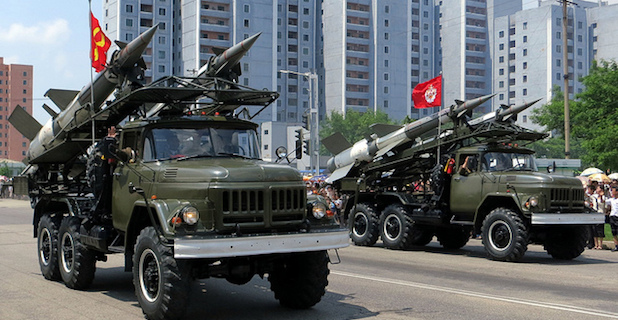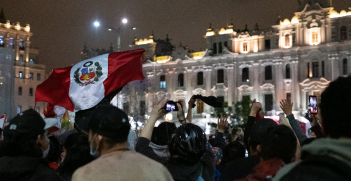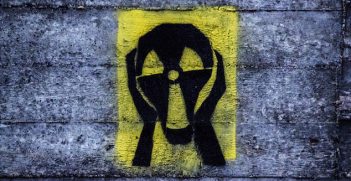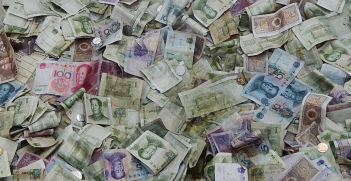DPRK: Cuban missile crisis 2.0 or Korean War 2.0?

North Korea has conducted its ninth reported failed missile test since US President Donald Trump’s inauguration. With the nuclear threat growing and tensions higher than ever on the Korean Peninsula, what role can Australia play in maintaining peace?
Speaking to Reuters in an interview at the Oval Office on 27 April, US President Donald Trump said: ‘There is a chance that we could end up having a major, major conflict with North Korea. Absolutely’.
The portents are ominous. On Saturday (29 April) the Democratic People’s Republic of Korea (DPRK) conducted another failed missile test. The US Congress has been briefed, Vice President Mike Pence and Secretary of State Rex Tillerson have toured allied and friendly countries around the Asia-Pacific, US Navy fleets are assembled in the vicinity of Japan and South Korea, which are in a state of heightened alert, and an anti-missile defence system has been installed in South Korea.
Part 1: The problem
The ingredients of a perfect storm on the Korean peninsula are:
- A country that has difficulty ending wars is unable to curb its instinct to start new wars;
- A completely inexperienced president who, in Hillary Clinton’s memorable phrasing, can be baited with a tweet, has his finger on the nuclear button;
- So too does an equally volatile leader whose most recent act of extra-territorial criminality was to kill his half-brother Kim Jong-nam at Kuala Lumpur international airport on 13 February.
Of course, it is possible that Trump has chosen to deal with North Korea’s history of serial brinksmanship by embracing the same strategy. The instrumentalisation of a high risk strategy—which requires going to but not over the precipice—has consequences that are far graver for issues of war and peace than profit margins in business deals. And nothing in Trump’s background gives reason for confidence.
The pathways to a war that neither side wants include a fatal miscalculation in the instrumental recourse to brinksmanship by both sides. US threats could spook Kim Jong-un into launching a preemptive attack, or Kim’s serial provocations could incite a South Korean military response that creates an unstoppable escalation spiral. Beyond the immediate crisis, an unchecked increase in North Korean nuclear warheads and delivery platforms will lead to higher risk postures and deployment practices in a region already heavily militarised, and intensify proliferation pressures in South Korea and Japan. A well-stocked but impoverished North Korea under tightening sanctions could proliferate weapons, offering materials and technology at international market-clearing prices, while its growing stock of fissile material will increase the risk of theft and sabotage by terrorists.
Thus the immediate and downside dangers of North Korea’s growing nuclearisation are real enough. Before we fall victim to the testosterone-fuelled post-truth word of alternative facts, however, a few historical facts are worth recalling. North Korea’s first nuclear test was conducted, not on Barack Obama’s watch, but when George W. Bush was president. Former Defense Secretary William Perry led a diplomatic effort during the Clinton administration that came tantalisingly close’ to a grand bargain: normalisation of relations with North Korea in exchange for it giving up its quest for nuclear weapons. US President Bill Clinton came close to completing the agenda of changing the regime’s behaviour and programs and left office hopeful that the task would soon be completed. Instead, the open hostility from Washington drove Pyongyang in the opposite direction, to a nuclear weapon test in 2006.
North Korea now has about 20 bombs and could have as many as 100 by 2025. Its current missiles can strike at South Korea, Japan and even Guam. It is working furiously on improving the range and accuracy of its arsenal of missiles, on miniaturising warheads to fit them on its long-range weapons, and on protecting its nuclear assets from attack by dispersing them across multiple locations, and investing in mobile launchers and solid fuel propulsion. Pyongyang is still between 2 and 4 years away from acquiring a weaponised intercontinental (5,500km+) nuclear capability to target the US. But if attacked, it can destroy Seoul with heavy conventional bombardment and it could retain some retaliatory nuclear capability against South Korea and Japan. This rules out military strikes against the DPRK and limits useable tools to sanctions, cyberwarfare and anti-missile defence.
Part 2: Possible solutions
North Korea’s regime is criminal but not suicidal and Kim is a survivor, not a madman. The security fears driving its nuclear programs are genuine. Senior North Korean officials told Siegfried Hecker, a former director of the United States’ Los Alamos National Laboratory, “If Slobodan Milosevic in Serbia, Saddam Hussein in Iraq and Muammar Gaddafi in Libya had had nuclear weapons, their countries would not have been at the mercy of the Americans and their regime-change tactics.” It requires chutzpah to say they have read their history wrong.
Against the remarkable history of forcible regime change by successive US administrations, American insistence that Pyongyang cannot be permitted to keep the bomb is based on a double hypocrisy: first, the idea that the US may have 7,000 warheads and the most powerful delivery systems but North Korea must not keep even one; and second, that the reason for this is that North Korea has no right to defend itself if it should be attacked by the US.
Russia and China have pointed fingers back at the Trump administration for the heightened tensions. In a United Nations Security Council session on Friday, Tillerson called on the world to unite behind tough action against Pyongyang. But the three nuclear powers have divergent strategic interests. Russia’s Deputy Foreign Minister Gennady Gatilov accused the US of “reckless muscle flexing” by sending more military assets to the peninsula. China’s Foreign Minister Wang Yi said expanded US–South Korean military exercises had led to the rise in tensions and that both sides shared equal responsibility for defusing the situation by resuming talks without preconditions.
There are two potential solutions to the crisis. Two years ago, the tension over the threat of nuclear weaponisation by Iran and the counter-threat of US military strikes was defused by a mixed strategy of pressure and engagement. In the resulting deal that effectively shrink-wrapped Iran’s nuclear program, both sides gained more than they conceded and thus have more to lose than gain if it unravels. Which explains, of course, why Trump has not abandoned the Iran deal.
To resolve the Korean crisis locally, talks must begin unconditionally. Instead of the P5+1 (Germany) formula used successfully with Iran, P5+2 (South Korea, Japan) is needed. While communicating clear red lines to North Korea that must not be crossed on pain of credible action, the interlocutors must also listen and address all its legitimate security concerns, including regime survival.
Australia’s role
What can Australia do? The Wall Street Journal columnist Peggy Noonan – speech writer and special assistant to Ronald Regan – wrote that “Being loyal isn’t being a lickspittle”. The article was reprinted in The Australian on ANZAC Day. This was symbolically highly appropriate for, although Noonan was writing about Republicans vis-à-vis Trump, the sentence perfectly encapsulates what a genuinely independent Australian foreign policy should be: loyal beyond question to the Western alliance when the chips are down, but not a lickspittle on all international issues.
And especially not on a, literally, life and death issue in the Asia-Pacific. One of the more significant checks to reckless foreign policy behaviour—not the least to distract attention from domestic troubles and rally popular support—is counsel of caution and moderation by allies in good standing. Australia’s instinct, when urged by Washington to jump, seems to be to ask, ‘How high?’. Instead Australia should be a voice for circumspection in dealing with an administration that is “elevating military power, sowing confrontations with allies” (sic). Strategic patience is a virtue and evidence of wisdom is not weakness.
Australia should also re-embrace nuclear arms control niche diplomacy. To address the nuclear threat globally, there is no substitute for steady reductions leading to eventual—not indefinitely postponed—elimination of all nuclear weapons. The third hypocrisy lies in punishing North Korea for its nuclear weapons program while boycotting the UN-mandated multilateral conference, supported by two-thirds of the non-proliferation treaty membership, to ban the bomb.
It defies all history, logic and common sense to believe that the most destructive weapons can be restricted to a handful of states. If not abolished, nothing is more certain than that they will proliferate and be used again some day, somewhere, somehow. Remarkably, those who dream of everlasting nuclear peace under a permanent nuclear monopoly call themselves realists.
Ramesh Thakur, a former United Nations assistant secretary-general, is professor in the Crawford School of Public Policy, Australian National University.
Photograph by Stefan Krasowski.
This article is published under a Creative Commons Licence and may be republished with attribution.





